Responsible tourism is becoming increasingly popular as travelers seek ways to minimize their environmental impact while supporting local communities instead of corporations. Green tourism, ecotourism, and sustainable tourism are all on the rise. Travel and hospitality industries around the world are changing to accommodate newer, more ethical models.
“Ecotourism” typically focuses both on protecting the natural environment and preserving and supporting local culture. It brings people to immerse themselves in nature while minimizing the ecological impact of the visit. Education about local plant and animal life is often the draw of the trip itself. Travelers can experience national parks, mountains, and marine areas, and their tourism dollars often directly fund the area’s conservation. Many ecotourism models also promote cultural immersion, offering income opportunities to families and small local businesses.
In the last two years, Quang Nam province in central Vietnam has heavily embraced the ecotourism model. The region is adapting rapidly to welcome global travelers to small family-run homestays, indigenous villages, and national parks.
Ecotourism in Quang Nam
The Tourism Association of Quang Nam Province has partnered with the Swiss Sustainable Tourism Programme to launch a set of green tourism criteria. The provincial tourism association will grant a “Green Certification” to venues in the hospitality industry that meet the international criteria for sustainability.
Hoi An is the most famous city in Quang Nam and has been a global travel destination for decades. In the last few years, businesses in Hoi An have embraced green tourism and are making significant efforts to reduce plastic waste and transition to eco-friendly products and packaging. Some collectives have organized “green tours” to clean trash from the beach and rivers.
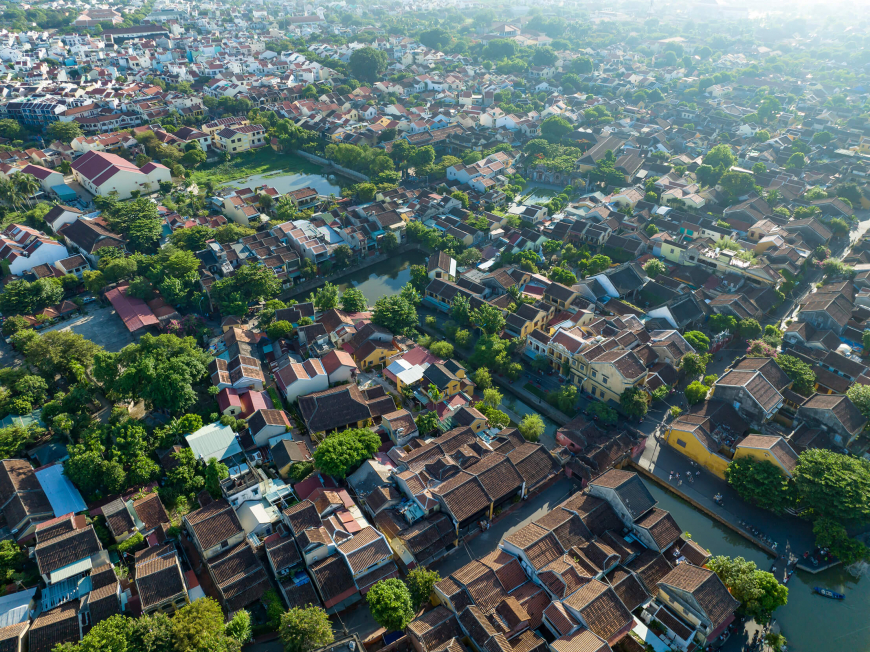
Tra Que Vegetable Village is one example of a simple ecotourism model in Hoi An. Tra Que is an organic farm established 300 years ago just outside of central Hoi An. Crops are fertilized with algae from a nearby lagoon, rather than chemicals. The farm uses traditional farming methods to supply local restaurants, markets, and homes with fresh herbs and vegetables.
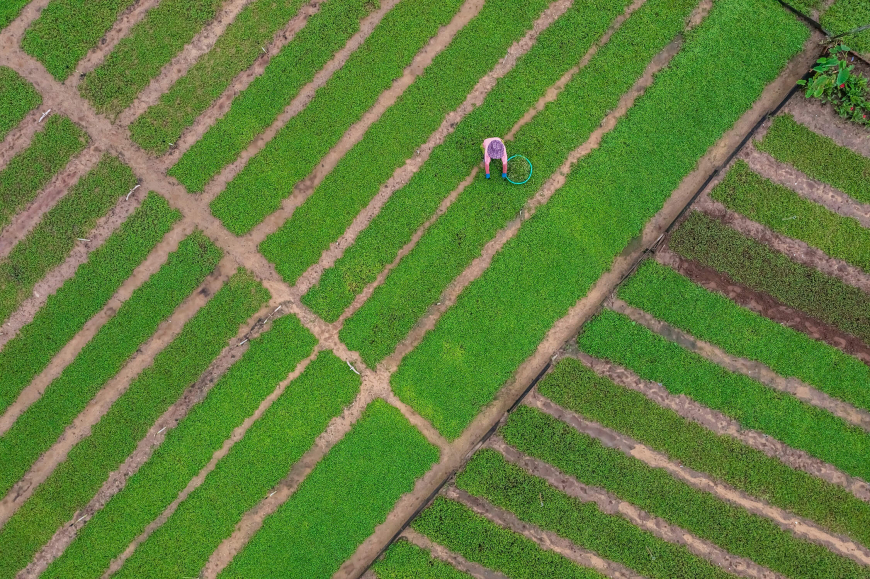
Visitors can enjoy a short scenic stroll through the gardens to see hundreds of rows of healthy crops in as many shades of green growing lush against a quiet sky. More immersive tours can also include a day working alongside farmers to understand the techniques and experience the lifestyle. A highlight of the trip includes harvesting ingredients, then learning and cooking local recipes for dinner.
Community-Based Tourism
Tra Que skirts the line of an experience that has come to be called “community-based ecotourism villages.” These combine education and cultural immersion with the promotion of local entrepreneurship. Tourists can stay at a homestay in a small village, instead of a hotel chain in a big city, and learn about locals’ daily lives while supporting their livelihoods. Bho Hong, Dho Rong, Triem Tay, Go Noi, Kim Bong, and Tra Nhieu are all eco-tourism villages in Quang Nam that offer this kind of “grassroots travel” experience.
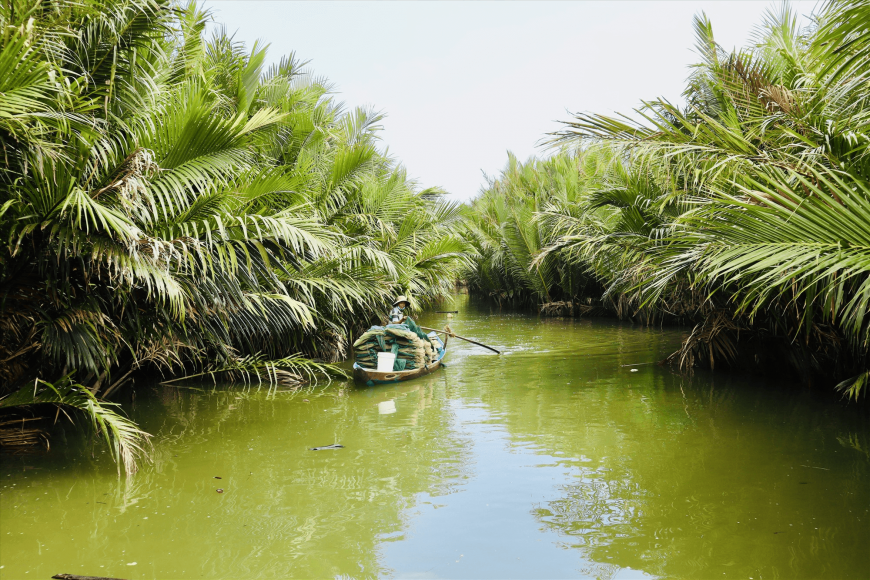
Source: Internet
Kim Bong Carpentry Village is another such destination. Kim Bong is nationally renowned for its skillful artisans who specialize in shipbuilding, furniture, and architecture. The village also makes tools, appliances, and artworks like statues. Visit the village to watch craftsmen at work on the trades they’ve mastered over generations. Then stroll across the East of the village to discover the ship-building area.
Tra Nhieu has been recognized as an ecovillage in an effort to preserve its traditional fishing community. The residents of this 60-hectare region make a living fishing, farming, and raising livestock. Many goods are made by hand here, like boats and woven mats. A trip here encompasses a range of activities that span a day in the life of a fisherman. Watch the morning catch reeled in, witness river life unfolds over the water, and eat fresh seafood caught and cooked by a neighboring family.
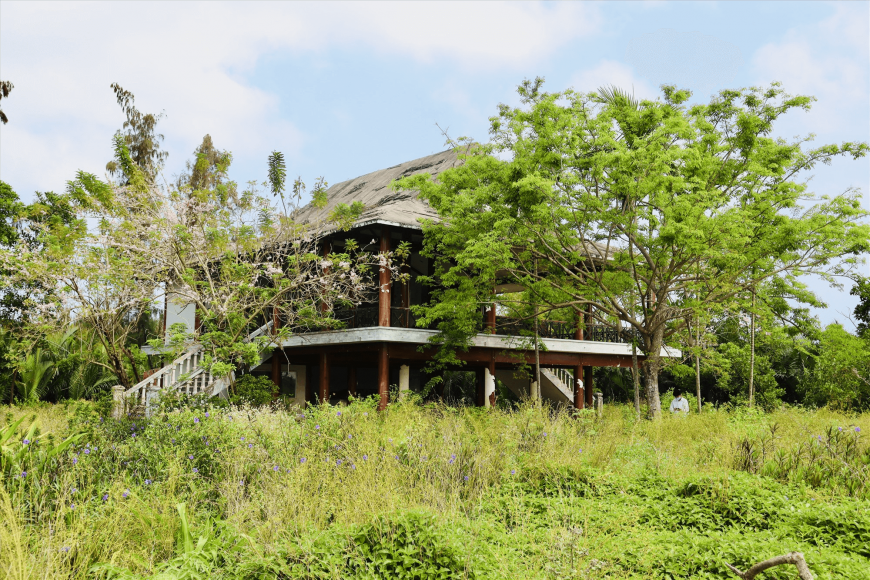
Source: Internet
Ecotourism and Environmental Sustainability
Ta Lang is an ideal ecotourism destination due to its location. Home to the indigenous Co Tu community, Ta Lang sits between mountains, forests, waterfalls, and other indigenous populations along the spectacular Ho Chi Minh Highway. USAID has supported Ta Leng’s development into an ecotourism village with the intention of protecting the culture of the Co Tu people while preserving regional biodiversity.
Follow locals through their daily lives including vegetable picking, fruit harvesting, and fishing. Adventurous travelers can join a guide on a bamboo raft down a river towards waterfalls, or down cycling paths through the jungle. In the evening, watch performances of indigenous music and folk dances after a hot, home-cooked meal of traditional dishes.
These activities are a world apart from the experiences that most travelers have in Vietnam, which focus on the food, crafts, and culture of the Kinh people, the majority Vietnamese ethnic group. Ecotourism like this has a threefold benefit. It supports local livelihoods and works towards the eradication of poverty. It protects local ecosystems and empowers the communities who live and work within them. And it offers off-the-beaten-path experiences that hotels, cities, and guidebooks cannot replicate.
Nature in Quang Nam
Most travelers to Quang Nam only stop in Hoi An, missing out on the province’s spectacular natural landscapes including agricultural land, mountains, jungles and rainforests, and islands. Local governments are making an effort to promote ecotourism models that fund the conservation of biodiversity in the region.
Song Thanh Nature Reserve was developed to preserve and rehabilitate 77,000 hectares of marine and terrestrial land. With a goal of being one of the biggest carbon stores in central Vietnam, the nature reserve hosts more than 800 species of flora and fauna, including 38 endangered species. A new tour will include a trek through the evergreen primary forest, where guests can interact with forest rangers and learn about wildlife conservation.
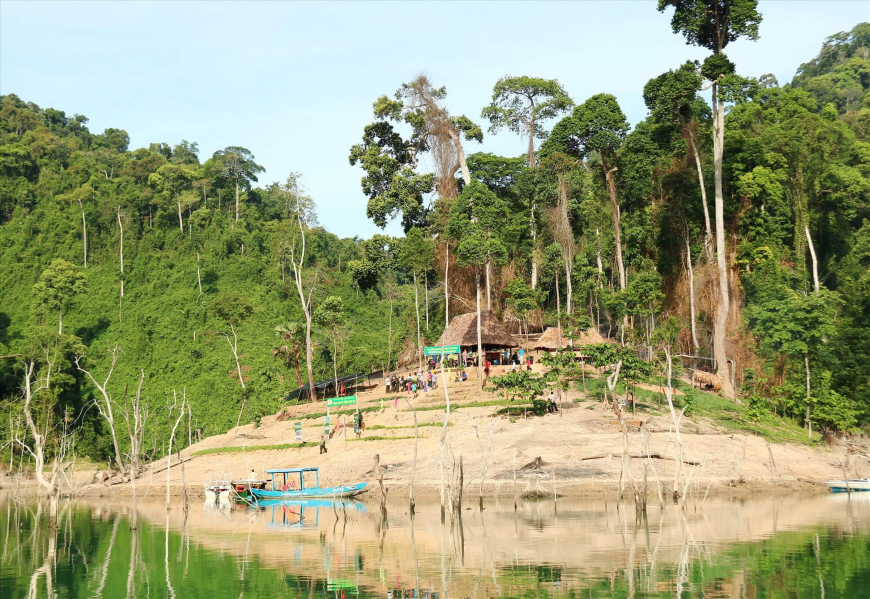
Source: Internet
Bay Mau Nipa Palm Forest acts as a water filter for the rest of the region and has been recognized as a World Biosphere Reserve for this reason. Local families run the area’s tourism, supporting local livelihoods and promoting sustainable travel. Visitors can join locals on round woven basket boats to visit the mangrove estuaries and watch fishermen catching crabs, snails, fish, and clams among the greenery.
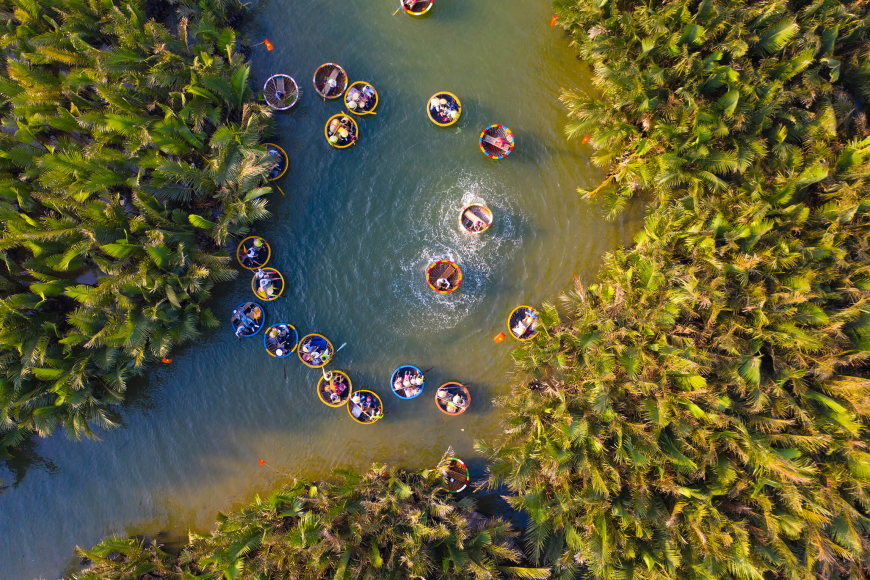
Hon Lao is already a popular tourist destination, sometimes called “Cham Island.” This is actually the largest of an eight-island archipelago called the Cu Lao Cham World Biosphere Reserve. The archipelago is recognized by UNESCO for its preservation of biodiversity, culture, and history. Cu Lao is covered in dense tropical forest, white sand beaches, and hundreds of hectares of healthy coral reefs. Its different climate zones teem with terrestrial and marine life, and its rainforest ecosystems are seasonally influenced.
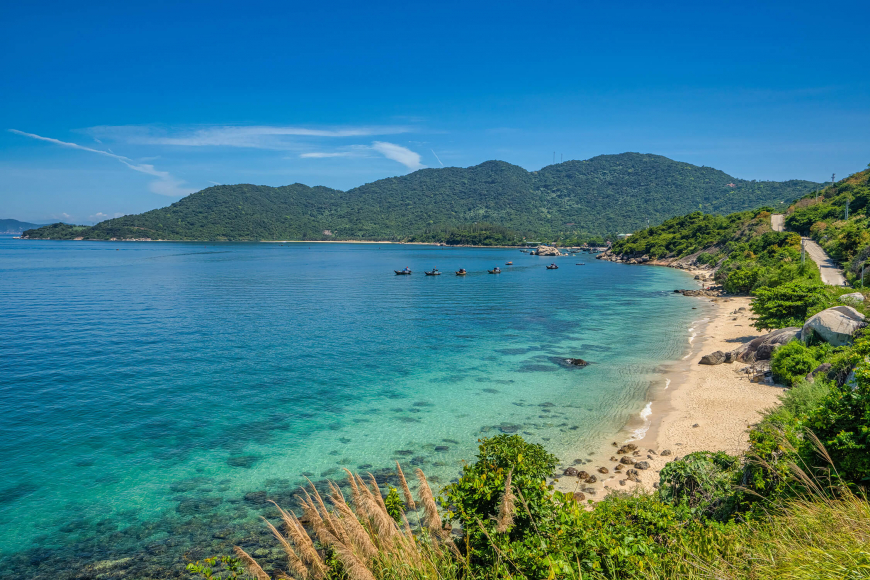
UNESCO has recognized Cu Lao as a place where human activities directly contribute to the conservation of nature. Much investment is taking place here to develop a tourism industry that continues to honor that delicate balance. As we travel through Quang Nam, Vietnam, and everywhere in the world, we can work towards a world where humans and nature live in better harmony by spending our tourism dollars in places that support that symbiosis.

